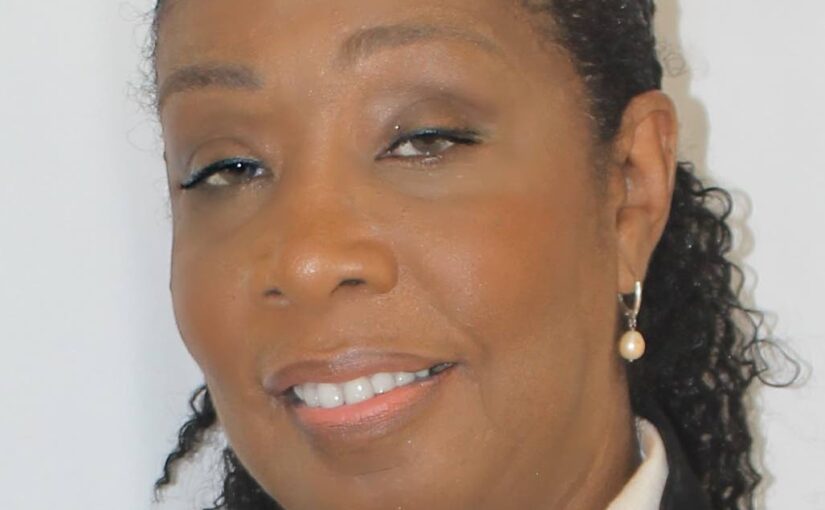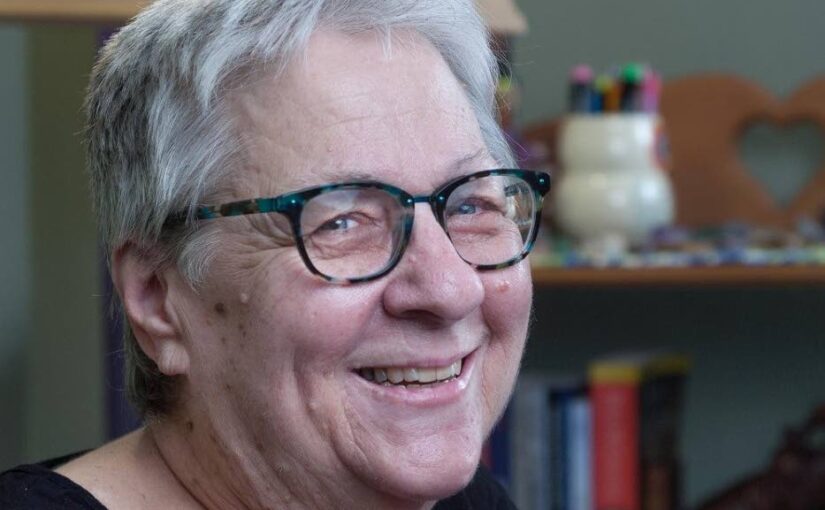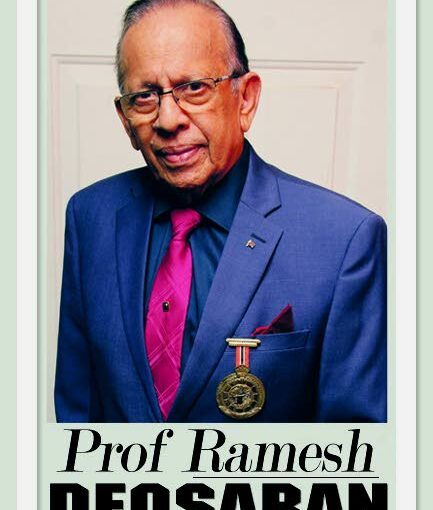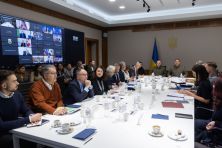The formula for peace and the plan for Ukraine's victory are processes that are impossible without each other. And without them, it will not be...
Vous n'êtes pas connecté
- English
- Français
- عربي
- Español
- Deutsch
- Português
- русский язык
- Català
- Italiano
- Nederlands, Vlaams
- Norsk
- فارسی
- বাংলা
- اردو
- Azərbaycan dili
- Bahasa Indonesia
- Հայերեն
- Ελληνικά
- Bosanski jezik
- українська мова
- Íslenska
- Türkmen, Түркмен
- Türkçe
- Shqip
- Eesti keel
- magyar
- Қазақ тілі
- Kalaallisut ; kalaallit oqaasii
- Lietuvių kalba
- Latviešu valoda
- македонски јазик
- Монгол
- Bahasa Melayu ; بهاس ملايو
- ဗမာစာ
- Slovenščina
- тоҷикӣ ; toğikī ; تاجیکی
- ไทย
- O'zbek ; Ўзбек ; أۇزبېك
- Tiếng Việt
- ភាសាខ្មែរ
- རྫོང་ཁ
- Soomaaliga ; af Soomaali
Rubriques :
 Maroc - NEWSDAY.CO.TT - A la Une - 10/Aug 05:22
Maroc - NEWSDAY.CO.TT - A la Une - 10/Aug 05:22
Instrument of unity, peace
Dara E Healy IN SOUTH Africa, they have the vuvuzela, in Australia, the didgeridoo and in Brazil the berimbau, traditionally associated with capoeira. In India, there is the veena, with the Saraswati eena said to be the most renowned of this type of instrument. In TT, we have the steelpan, one of the few instruments in the world to be officially designated a national instrument. However, in spite of all the accolades and the commemoration of World Steelpan Day tomorrow, it sometimes feels as though we still need to meet the pan. I often feel we have not really taken the time to get to know her or understand how to tap into her essence for transformation and peace. I think the official designation was important. Just over 30 years after the idea was first broached by former prime minister Patrick Manning, it feels good that pan is finally being seen, perhaps in ways that were not even possible back in 1992. The legalising of pan as our national instrument has led to declarations about the doors that will be opened for strategic investments and tourism. Much has been made of how it will affect our reputation in the global entertainment industry. Commentators speak about the potential to commercialise our instrument and the anticipated benefits. But there is another kind of conversation worth having. Pan is more than the only acoustic instrument created in the last century. To understand her, we must go back to the beginning, to the drum, ancestral spirit of the pan. In fact, to truly know and understand the pan we must travel even further back and delve into her connection with African spirituality. In Orisa in Trinidad, Funso Aiyejina and Rawle Gibbons discuss the retention of Yoruba spirituality and cultural forms. For them, pan is “another descendant of Orisa/Africa drums,” emerging after the drum was banned in 1884. Scholars maintain that the progression from tamboo bamboo to biscuit tin and ping pong demonstrates the powerful influence of the African drum. Maureeen Warner-Lewis points out that the organisation of tamboo bamboo bands and steelband orchestras are similar, incorporating instruments of varying depths to “produce a range of pitches, from tinkling soprano to rumbling bass.” She notes that this is different from the way orchestras from European traditions, for instance, are structured. In the steelband, emphasis is placed on percussive instruments or drums. Patrick Roberts writes, “Under the protection of Ogun, the Yoruba god of iron…many of the things that were used in their enslavement were transformed into the implements for celebration in worship, masquerade and music.” In talking with elders from Despers and other bands, I have been told that early steelbands in Laventille frequently rehearsed in the Orisa yards. The yards would have been safe spaces for the often-ostracised pan players, as they tuned and innovated the instrument of which we are so proud today. Why should any of this matter? I had the opportunity to chat with a parent of one of the children who attended our vacation camp. Her daughter, about ten years old, played the national anthem on pan with the confidence of a young person beyond her age. She is a natural dancer and was excellent at theatre. Still, her mother expressed concerns that school was a challenge. I said, “She’s bored, right?” The mother looked at me with a mixture of surprise and relief that someone understood. I have expressed before in this space that the way we teach pan (and the arts in general) is not engaging to gifted young artists. I explained the connection of the pan to African spirituality and the drum because this is where education about our instrument should begin. For true sustainability of our instrument, we must share with young people her story of resilience, community and spirituality. The pan is an instrument of spirit. Her notes hold ancestral memories of Yoruba songs, dance and masquerade. We no longer need to fear these connections. We understand now that African spirituality was central to our freedom across the Caribbean – from Jamaica to Barbados, from Tobago to Suriname and Haiti. As we strive for unity and peace, let us tell the young people the whole story of their pan. It is time to reveal the secrets of the past to secure the blessings of the future. We are here because spirit protected us. Do not be afraid; she always will. Dara E Healy is a performance artist and founder of the Indigenous Creative Arts Network – ICAN The post Instrument of unity, peace appeared first on Trinidad and Tobago Newsday.
Articles similaires
The values of Divali
DINESH RAMBALLY THE THEME of this year’s Divali Nagar was "Grihastha Ashram," one of the stages in the life of Hindus. In Hinduism there are four...
Aare Adetola Emmanuelking Reaffirms Commitment to Yoruba Culture at Ooni of Ife's 50th Birthday
In a gesture that underscores his unwavering commitment to promoting and preserving the rich Yoruba culture and traditions, Aare Adetola...
Light, spirituality and equality
THE EDITOR: As the Festival of Lights illuminates our homes and hearts, at the Equal Opportunity Tribunal we pause to remember the significance of...
Unity makes church
Compromise feels like a curse word these days. Opinions are deeply entrenched. Distinctions between “us” and “them” are sharply defined....
An Ode to Mark Loquan
THERE’S AN art to coming off as an ordinary person when you’re really special beyond all measure, and Mark Loquan has mastered that...
Bless our cultural diversity
This year’s bright Divali messages remind us again of the spiritual and moral options we still have in removing the darkened conditions now facing...
Sandu retains the presidency with a significant lead after 99% of the votes have been counted
The current pro-Western president of Moldova, Maia Sandu, has been re-elected for a second term, leading by more than 10 percentage points over her...
Withdrawal of Russian troops and cessation of hostilities: Eighth thematic conference was held following the First Peace Summit
Head of the Office of the President of Ukraine Andriy Yermak took part in a thematic conference dedicated to the sixth point of the Peace Formula...
Potent Quill: Winners
The winners of 400k have emerged! For the second successive year, we held a writing BootCamp, aptly cleped Potent Quill. Daniel and I fully developed...
Les derniers communiqués
-
Aucun élément









